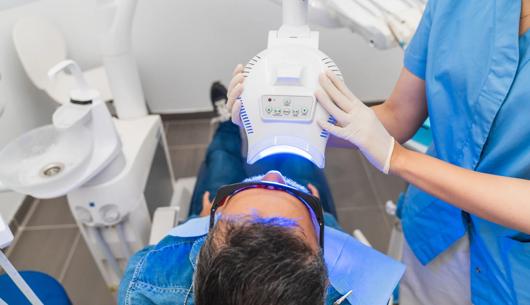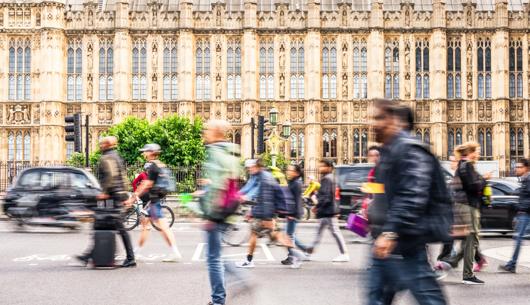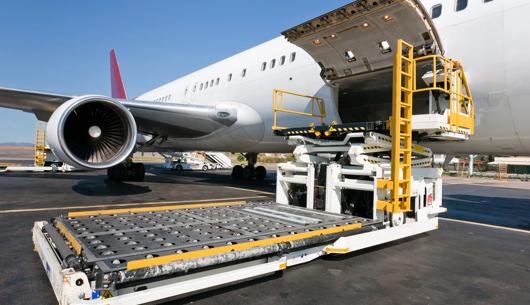Paul Newman, Founder and CTO of Oxa, said:
“The act gives the UK new momentum as developers like Oxa will need to comply with the world’s most comprehensive autonomous vehicle laws to deploy technology in vehicles here. Meeting the highest AV standards will make British companies global leaders with technology that is the safest and AI systems the most trusted – all key to building business and public trust in autonomy globally.”
Oxa, a company headquartered in Oxfordshire, England, is trialling self-driving cars in England.
Teams at Oxa and Wayve, a British startup, welcomed members of the House of Lords and the House of Commons to experience self-driving technology in action whilst the AV Bill was going through Parliament.
What does the act do?
- Defines automated vehicles.
- It sets out an authorisation scheme for automated vehicles and licensing of operators for vehicle use without a user in charge. Detailed regulations establishing the authorisation, operator licensing and in-use regulation functions will follow.
- The Act sets a safety threshold for self-driving vehicles to be at least as careful and competent as a human driver. The act introduces a vehicle approval system whereby vehicles will be subject to detailed technical assessment and approval on safety, including cyber security.
- Defines a user-in-charge of a vehicle as an individual in position to exercise control of the vehicle but who is not controlling it, when the vehicle is an authorised automated vehicle with an authorised user-in-charge feature and that feature is engaged.
- It delegates practical details to secondary legislation. A comprehensive programme of secondary legislation is set to follow, including regulations on misleading marketing.
- Secondary legislation will set out authorisation requirements which must so far as reasonably practicable ensure that:
- transition demands to the user-in charge to assume control of the vehicle must be capable of being perceived by anyone who might legally be a user-in-charge of the vehicle (having regard in particular to users-in-charge with disabilities) and the transition period must be long enough for the user-in-charge to prepare to assume and assume control of the vehicle.
- during this transition period the vehicle continues to travel autonomously, safely and legally.
- vehicles deal safely with a situation where the user-in-charge fails to assume control by the end of the transition period.
- In assessing whether a vehicle is capable of travelling autonomously and safely, particular regard must be had to the statement of safety principles. This central statement of safety principles is not year prepared. Once prepared it will be put before both Houses of Parliament.
- Establishes an independent incident investigation function.
- Prohibits misleading market practice such as using ambiguous terminology in advertising material. Regulations will set out specific terminology and symbols reserved for marketing authorised self-driving vehicles. Tesla has long marketed software, classified as an assistance system, as “fully self-driving” when divers must stay alert and ready to take over. The Act prevents the use of this terminology for a system that requires active supervision from the driver.
- Even in fully automated mode users-in-charge must be fully trained and sober – so that they can resume control of the vehicle if required.
- Makes information about traffic regulation orders available digitally and in a common format for use in self-driving vehicles and other systems that facilitate driving vehicles on a road. This data can then be used to support the safe operation of automated vehicles (information includes speed limits, road closures and restrictions, location and times of use of bus lanes and parking bays).
What does this mean for insurers?
A key focus of the Act is road safety. Automated vehicles are expected to improve road safety by reducing human error, which contributes to 88% of road collisions. The insurance industry is supportive of the development of automated vehicles - they have the potential to have a profound impact on road safety. In addition to economic benefits and the potential to extend mobility to people who are currently unable to drive.
The insurance industry played a key role in driver take up of Advanced Driver Assistance Systems such as active cruise control and lane departure warning systems. Anecdotal experience shows that the public do not prioritise safety systems when purchasing new cars. Faced with a limited budget for optional features people tend to select top of the range in car entertainment systems over Autonomous Emergency Braking, even though the latter has been shown to reduce vehicle collisions by between 20 and 40%. The insurance industry incentivised its uptake early on, reducing premiums on vehicles with Autonomous Emergency Braking. With autonomous vehicles expected to have clear safety benefits, insurers may be able to incentivise their take up.
Whether or not the user-in-charge was in control of the vehicle at the time of an accident will be important in establishing liability. Further clarity on this point is needed from secondary legislation. For example, collision information should be immediately available on a neutral and equitable basis to insurers to help establish who was driving and what decisions were made in an automated vehicle incident.
There is currently a gap in the law in relation to uninsured automated vehicles. It is important that this gap is closed, including for situations where they are involved in cyberattacks or acts of terrorism.
There is a particular concern that multiple autonomous vehicles could be hacked simultaneously, including as part of a terrorist attack, which could significantly increase the magnitude of terror events involving vehicles (where typically only one vehicle is used at present). Reinsurers may treat cyberattacks affecting multiple vehicles as individual incidents, rather than a cumulative event which could trigger reinsurance thresholds.
Contents
- The Word, June 2024
- Artificial intelligence in insurance: Targeted marketing as a quasi-underwriting function
- Uninsured driving: The road to liability for insurers and third parties
- Court of Appeal upholds decision on professional indemnity policy exclusions in insurer's appeal
- What does the draft terrorism (Protection of premises) bill (Martyn’s Law) mean for insurers?
- Tobacco and snus use – are insurers asking the right questions?
Key contact

Tim Johnson
Partner
tim.johnson@brownejacobson.com
+44 (0)115 976 6557









































